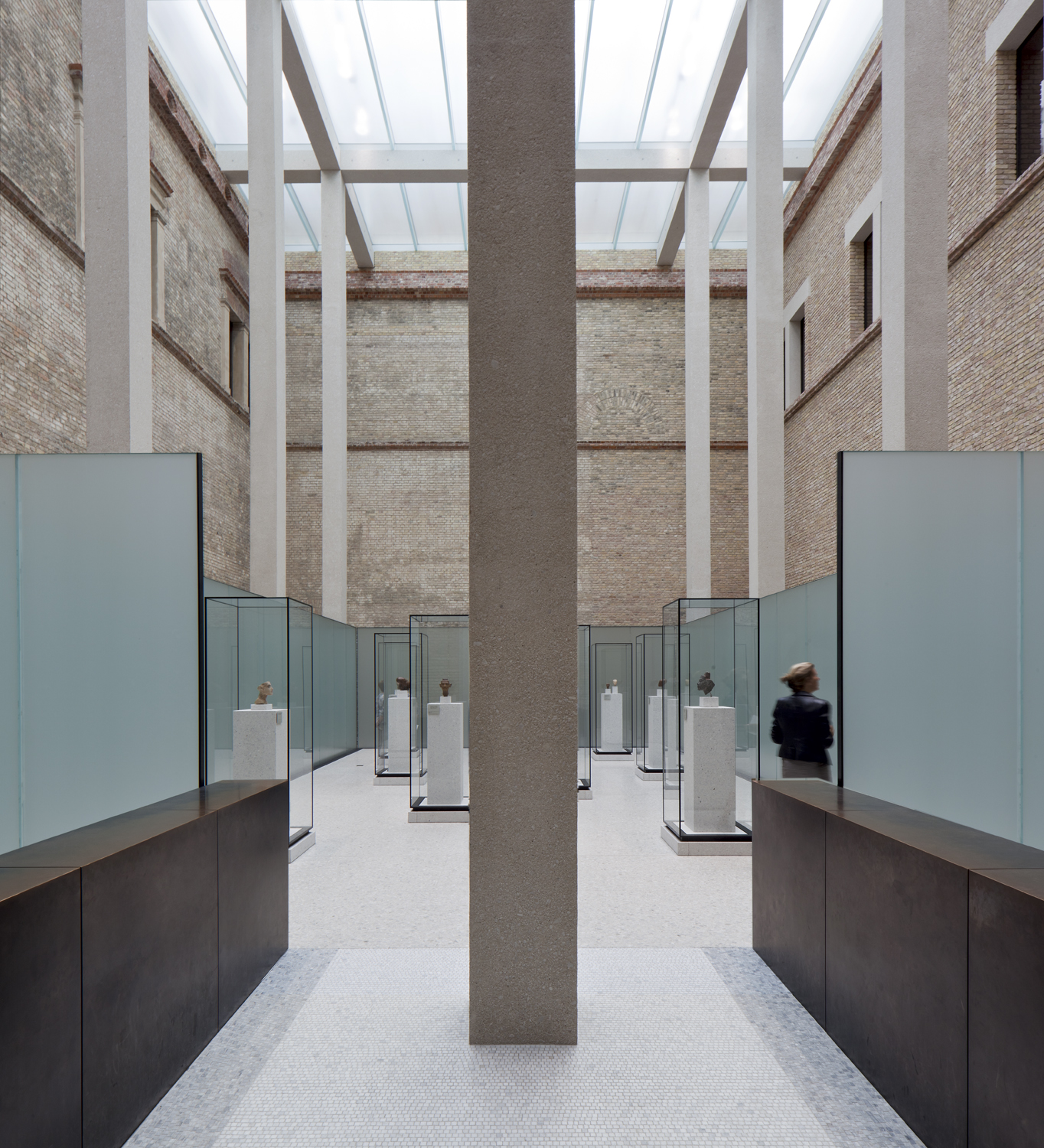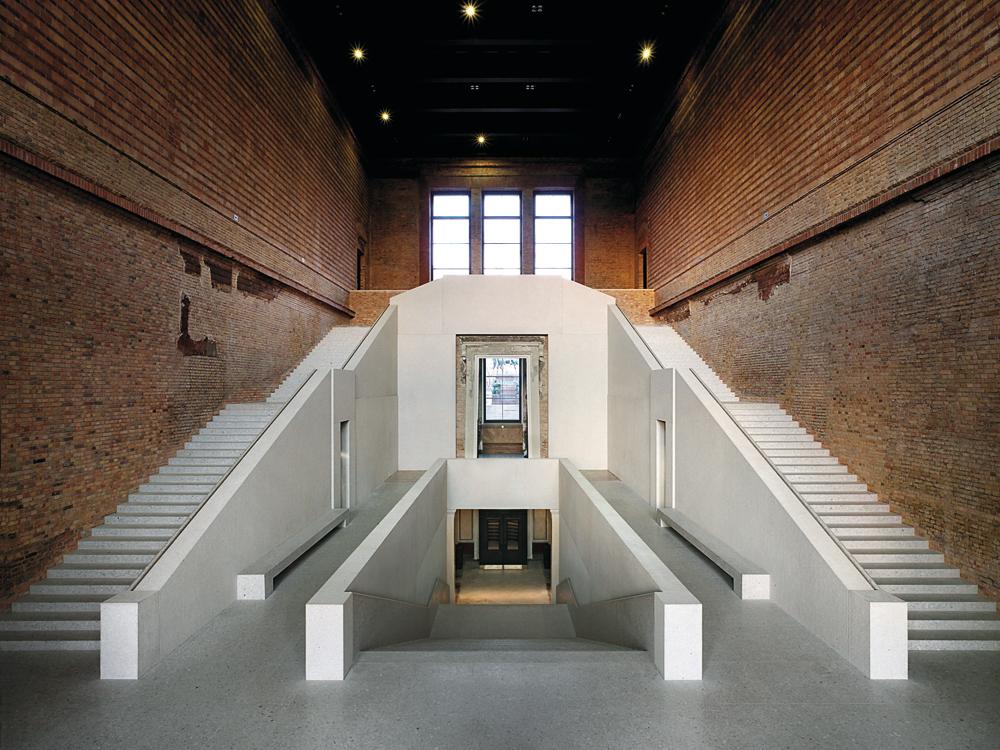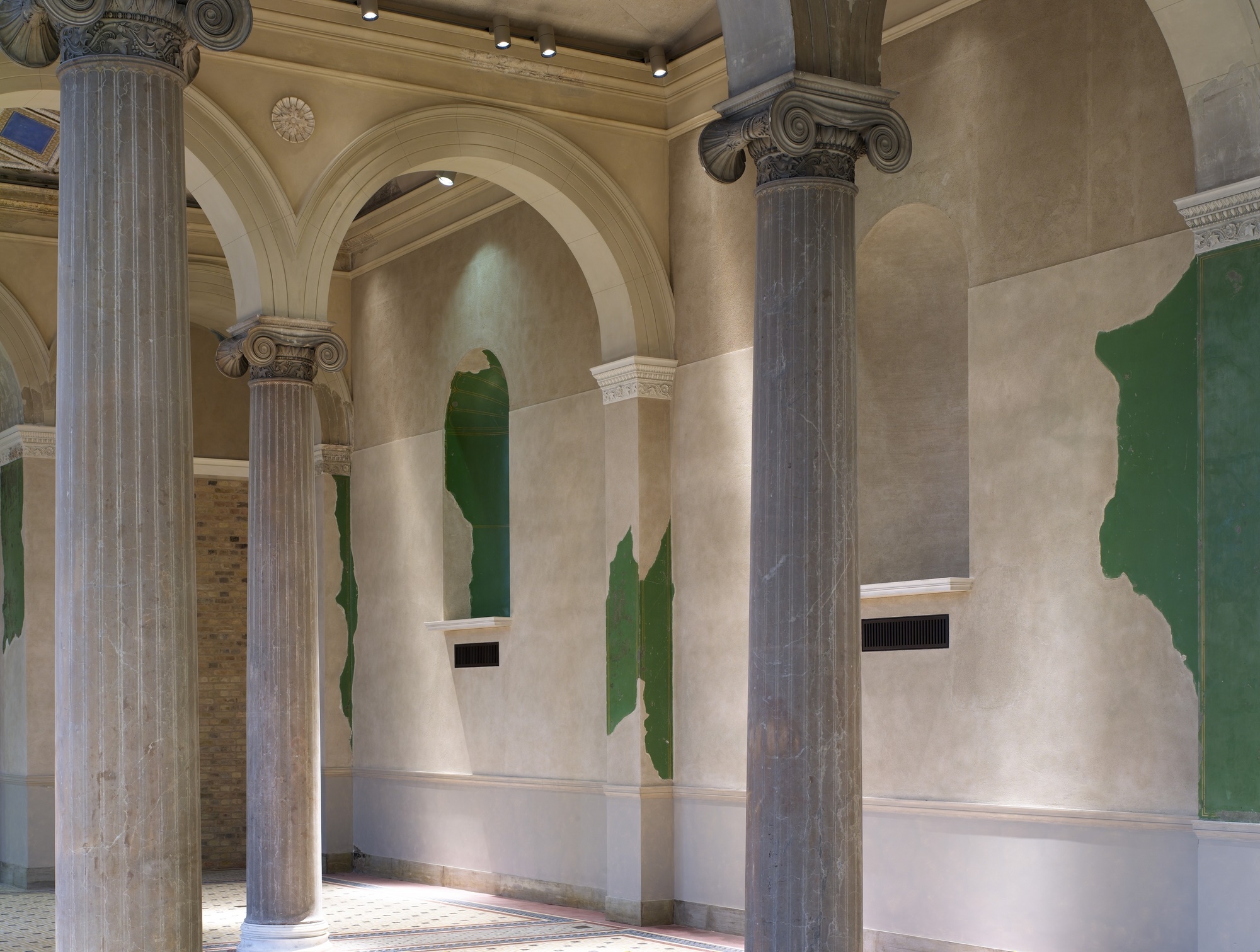at the Neues Museum
David Chipperfield at the Neues Museum in Berlin
For the past months, I’ve been haunted by a passage in Rebecca West’s Black Lamb Grey Falcon. The book, a bit of an obscure cult classic, written on the eve of World War II and ostensibly about the multi-ethnic, multi-cultural Balkans, is actually a much broader and penetrating portrait of the complexity of human nature. The passage reads:
“Only part of us is sane; only part of us loves pleasure and the longer day of happiness, wants to live to our nineties and die in peace, in a house that we built, that shall shelter those who come after us. The other half of us is nearly mad. It prefers the disagreeable to the agreeable, loves pain and its darker night despair, and wants to die in a catastrophe that will set back life to its beginnings and leave nothing of our house save its blackened foundations.”
The first time I read this, it gave me a knot in my stomach. I had never heard such a pessimistic, blunt assessment of human nature. Certainly, part of becoming a human being is being taught about the existence of evil in the world. This, life had taught me—that certain people are irreconcilably malevolent. But Rebecca West was proposing something quite different: she was suggesting that this dual nature—love of the light of goodness and the dark of apocalypse—is really inherent in each of us, and certainly part of every culture. Reading it felt like the uncovering of a secret that made an unsolved mystery make sense.
Standing in David Chipperfield’s masterful restoration of Berlin’s Neues Museum, Rebecca West’s passage flooded back. In the most splendid, most transcendent, most lovely manner possible, Chipperfield has made physical this fact of human nature.
The fate of the Neues Museum—left a bombed out shell in the war–was still undecided well into the 1980s. It was badly damaged, and a strong, logical case could be made that it should be torn down.
Indeed, this conversation is still happening in Berlin—it’s still reconstructing damage suffered by Allied bombings over sixty years ago. Over those decades, each rebuilding project has had to develop an appropriate restoration concept: obliteration of the past; tidy separation of destruction and reconstruction; or reconstruction meant to fool one into thinking the building somehow survived the war intact.
The Neues Museum reconstruction makes a clear distinction between old and new, but it weaves the two together in a complex, vibrant manner that I’ve never experienced before. I was especially moved by the interiors. Chipperfield gave great consideration to the approach he would take here, summed up in his essay in the book Neues Museum: Architecture, Collections, History.
There were some areas that were not substantially damaged, and it seems that if an accomplished plasterer and painter could feather their work to match the surrounding original surfaces, that was the approach taken. Those areas were few.
More common were areas of badly damaged intricate plaster, fresco and decoration that simply could not be replicated without damaging what was left and without resorting to conjecture and fakery. Of these areas, Chipperfield notes:
“Desiring neither to imitate nor to invalidate the remaining complex of ruined fabric, a Piranesian structure of bricks and architectural fragments, our concern has been motivated by the desire to protect and to repair the remains, to create a comprehensible setting, and to reconnect the parts back into an architectural whole.”
These areas are quite stunning to experience. The juxtaposition between the old and new surfaces is frank and complex. Photos make it look like they are fragile and crumbling, but in actuality everything that is left is decidedly solid.
Some areas were so badly damaged that they had to be completely reconstructed. The central stairwell is one of these areas, as is the Egyptian Courtyard. In these spaces, once-richly decorated surfaces were completely destroyed, and the raw surface of construction brick has been exposed and left unadorned. Against these surfaces sit new architectural interventions—columns, stairways, railings. They sit in clear distinction to the original architecture and make no historical reference to the original building. However, these new insertions are beautiful and well crafted in their own right. Speaking of these big moves in contrast to the smaller areas of repairs, Chipperfield says,
“A small repair needs no quality of its own; a large one, if it is not just to become a lifeless and empty ‘placeholder,’ must have a physical and material character of its own.”
The emotional impact of Chipperfield’s work here is significant. First, he has allowed this building to express vulnerability, like a once-grand duchess who has fallen on hard times. But like the duchess, this building still expresses pride and stature. The scale and the extant details reveal noble heritage, and a story is told of a tragic, irreconcilable past. Second, and even more importantly, is a sense that although the past is acknowledged and not forgotten, this is a building that looks forward. It recognizes the dark of human nature, but confidently moves toward the light.
Neues Museum: Architecture Collections History, ed. Elke Blauert and Astrid Bahr. Staatliche Museen zu Berlin.









